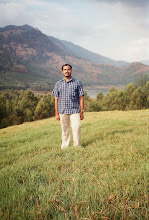Saturday, January 3, 2009
Idukki
This district’s name, ‘Idukki’ is supposed to be derived from the Malayalam word ‘idukku’, which means a narrow gorge. That could well be true, for narrow, steep-sided valleys are not strange phenomena in this hilly district, flanked by the Western Ghats in the east. The river Pamba originates in the mountains of Idukki. For the people of Kerala, Idukki is always associated with Power Generation. Idukki, the abode of spices and energy, forms the bulk of the High Ranges. Gifted with pristine natural beauty, Idukki abounds in forests. These forest areas are homes for a variety of flora and fauna besides being home to the wild life tigers, bisons, deer, monkeys etc. There are 14 peaks including the state’s highest peak Anamudi in the Kannan Devan Hills lying at heights 2500 meters above sea level in the district. The rainfall, temperature, humidity in the district shows a high degree of variation and in the winter, the temperature falls down to freezing point at the peaks. The scenic beauty of Idukki is unique in every respect. It has nothing to boast of the rise and fall of dynasties, but it has housed a flourishing civilization. The Mangaladevi Temple dedicated to Kannaki of ancient Tamil literature, Marayur Caves known as ‘Muniyaras’ with ancient cave paintings, Muthalakkudam Church built in the 13th century, Minar mosque built by Vadakkumkoor Rajas etc speak volumes of the civilization that flourished in Idukki.
Subscribe to:
Post Comments (Atom)

No comments:
Post a Comment